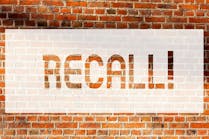In the world of Real-Time Location System (RTLS) modalities, there generally are three types of signaling for data transmission – active, passive and hybrid chips or tags. Strategically, which option applied where – people, processes, products and equipment – makes the most sense and why? Track-and-trace technology experts share their recommendations.
People (tracking patients, staff, visitors, product/service reps, including third parties):
Active: “This provides the richest set of data when it comes to locating people and the most granular, low latency real-time information.
Passive: “Passive is not appropriate for real-time locating of people.
Hybrid: Hybrid could be useful to provide access control functions, but not generally relevant to RTLS for people.
Processes (tracking motion, output, performance and workflow):
Active: “Active technology is preferred when you need to solve a complex problem with an unpredictable path. For example, tracking assets that travel throughout the hospital or optimizing patient flow.
Passive: “Passive is suitable for sterile processing or other processes that are highly fixed or have a more predictable path. Other examples include food services or an assembly line.
Hybrid: “When combining predictable and unpredictable processes, a hybrid solution could be useful. This would be useful, for example, in sterile processing when documenting the path of a surgical tray that needs to go through a standard cleaning process, but then also be tracked as it moves about the entire operatory department.
Products (tracking motion, storage, use and disposal):
Active: “Active signaling is not recommended for consumables or disposable products due to the cost and size of active devices.
Passive: “Strategically, passive makes the most sense when tracking a low cost, low-profile or disposable item. For example, if you tag a saline bag, you are not going to remove the tag when it’s empty.
Hybrid: “Passive would be our recommendation.
Equipment (tracking motion, storage, use and maintenance/repair/reprocessing):
Active: “Active RFID is ideal for real-time locating and management of processes related to critical healthcare equipment.
Passive: “When disposable or consumable tags are required on equipment, passive RFID is most beneficial. It can only be effective if the equipment remains on a fixed path throughout its lifetime, and it also minimizes loss.
Hybrid: “Often, hybrid systems require equipment to spend part of its life on a fixed path, or the information about the equipment can – only be accessed at specific times. A hybrid system could be useful in a supply room or cabinet, for example, when tracking inventory and protecting against loss.”
– HT Snowday, Vice President, Innovation and Technology Development, Midmark RTLS Solutions Inc.
People
Active: “Hospitals increasingly need to provide their staff with greater levels of protection from workplace violence. Any locating device must have the ability to communicate that an individual staff member is in duress. Active tags are the only category capable of providing this. Patient tracking should also use active signaling, especially as passive signaling cannot provide room level tracking as accurately as active signaling.
Passive: “Visitors and product representatives should be tracked with passive signaling, due to the challenges associated with retrieving the tags. The challenge with passive signaling, however, will always be the cost of initial infrastructure, along with the lack of visibility between readers of location.
Processes
Active: “Active signaling is the superior technology for process tracking because it provides a consistent ping from the tracked item. With passive signaling, organizations need to know their workflow in advance to plan readers correctly. This is typically a hurdle and a key driver that informs a facility that they should implement RTLS. Active signaling will show organizations where things go and sometimes surprises new adopters when things go to places they should ‘never’ go.
Products & Equipment
Hybrid: “The use of hybrid signaling depends on the size and cost of the item. For high-dollar items, use active signaling and focus on process. For low-dollar items, use passive and focus on shrinkage.”
– Bob Metzler, Senior Product Manager, Acute Market, STANLEY Healthcare
“The right technology, or technology mix, is often fully dependent on workflow requirements within each facility, and the level of visibility required. Clinicians have different movement patterns than patients, and both have different movement patterns than assets. Room-level visibility is often essential for patients and clinicians but rarely so for assets.
“Active signaling is the most ideal RTLS modality when tracking patients and staff. With active signaling, tags or beacons are constantly pinging for ‘real-time’ location status, and they can measure proximity of one individual to another. In recent years, this has become more critical when trying to enforce social distancing within a facility during the pandemic, or simply when looking to measure patient and staff interactions. Passive signaling, while an option, only provides periodic (‘last seen’) updates, though it can be useful when the motion to be tracked follows a set track (e.g., outpatient surgery journey).
“When using RFID technologies for tracking processes and assets, active RFID technologies can provide automatic, periodic updates which tend to work best for motion tracking applications. If a facility is in need of a monitoring solution to track choke points in their processes though, passive signals offer a low per unit tag cost when used in conjunction with a fixed infrastructure. This can also provide for immediate action or alerts when a tag approaches a choke point.
“Last, when looking at tracking needs within these categories as well as holistically within a healthcare facility, there is no one perfect solution or technology. The ability to apply the best technology for each use case, and then to bring all that data into a single data warehouse which can then provide highly accurate location data to multiple end-user systems is ideal for hospitals. Disparate, single-use solutions can put a maintenance burden on all users across the hospital, from IT and Biomed management personas to end-user clinicians. Maximizing the availability and utility of location data generated by any technology can ease that maintenance burden while also driving efficiencies and improving patient care.”
– McLeod Williamson, Intelligent Edge Solutions (IES) Specialist for the Government and Healthcare teams in North America, Zebra Technologies Inc.
People
Active: “The rapid movement of people, especially staff and patients, in any space requires an active solution to effectively monitor their location in real-time.”
Processes
Hybrid: “A hybrid system can work well for process monitoring that includes people and the use of products. However, processes that are primarily people-driven generally need active solutions. When it comes to processes, a hybrid approach can often be the best course of action, both for value and effectiveness.”
Products
Passive: “Passive monitoring is often the most cost-effective method when it comes to the more common products within a healthcare facility. Individual items are usually low in value, and thus small, disposable passive tags are usually the best option to keep track of these products.”
Equipment
Active: “When it comes to mobile medical equipment, healthcare teams require an active system to effectively monitor for optimal use-case ROI.”
– Kevin Paroda, Global Product Manager, Acute Care, CenTrak
More on RTLS:
RTLS cultivates accuracy, safety and security of data, people and products
Rooting through RTLS options, opportunities

Rick Dana Barlow | Senior Editor
Rick Dana Barlow is Senior Editor for Healthcare Purchasing News, an Endeavor Business Media publication. He can be reached at [email protected].





